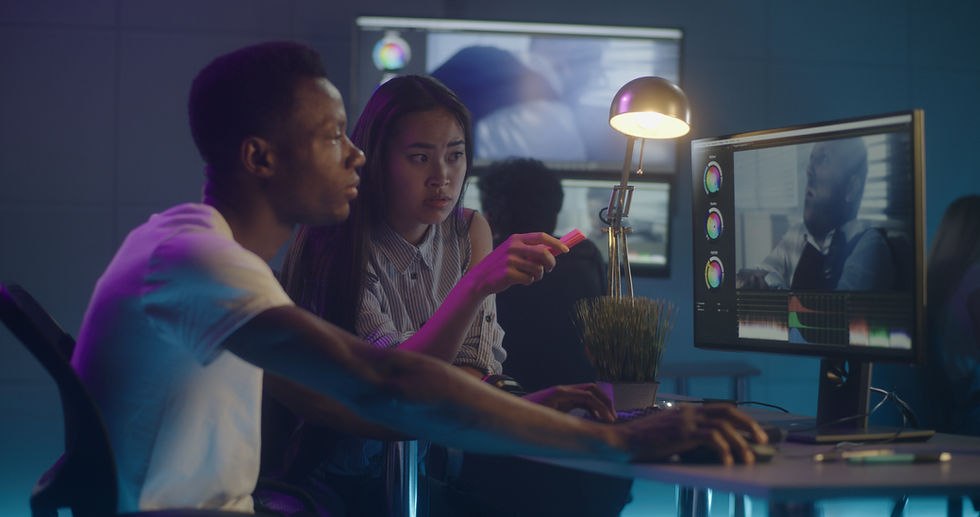The Challenges to New Literacies Competencies Application or Learning
- ShiZhi
- Jun 16, 2022
- 3 min read
The Challenges to New Literacies
As our group created the digital storytelling video, we faced many challenges. The following are the sums of our challenges and thoughts about them.

Identify Relevant Info - Joey
Working on an advocacy campaign can be tricky in a way that the enthusiasts in the group wanted to include as much persuasive information as possible in the video production. Throughout the searching and consolidation of information, we found that it was a challenge screening out most critical information needed. Considering the attention span in audience, we were aware of time keeping of the video. This also means that the group needs to select the most critical information from the sea of information. Unenviably, there was a slight loss of focus in the middle of discussion and luckily some members from the group were able to support this difficulty by reminding the focal point from time to time.

Compromise Context & Content- Athena
When conducting the online research, we had a consensus among team members to use different keywords to formulate the search strategies and slightly modified them after several discussions. Since there was a massive of information found on the Internet, we were selective and identified those related to the Hong Kong context. Otherwise, it would be out-tracked. And also, it required evaluation of the selected materials that could truly reflect the situation and get the outcome that we want from our target audience. Finally, we curated the information precisely to create a meaningful content to raise the awareness of food wasting. In the process, we compromised on both context and content in order to create the digital story effectively.

Consolidate Materials - Winnie
After the storyboard is confirmed, we started searching for the pictures for the video. Ingrid took care of the voice over, I was incharge of the video editing, other teammates were to search for pictures, and we were to upload everything onto Google before Tuesday evening. It was difficult to work separately for two major reasons. (1) Our communication was mainly on WhatsApp since we have busy schedules. After finishing the first rough cut, we spent quite a lot of time to collect teammates' comments to adjust the flow and content. (2) We encountered technical problems as HKU switched the cloud service from Google to Microsoft. Some teammates' upload was unavailable at my end. The video was too large to be played on cloud, we eventually called an ad hoc Zoom meeting to work on the final touch up.

Verifying Credibility - Race
After identifying some relevant information related to our topic, we verified whether they are reliable and creditable. We checked whether the information is up-to-date and whether the sources expertised in the domain of food waste. Then, we checked how they collected and processed the data they provided, and we analyzed if those information is appropriate and understandable to our target audiences.

Finding Images - Catherine
As we decided to make the video with a sequence of photos, the scenes were numbered and assigned to the teammates for the photo hunt. We set several criteria for the photos in order to effectively deliver our message: (1) the resolution should be no lower than 300dpi, or 1000x1000 in pixels, (2) dramatic picture with only one human figure as it better triggers empathy, and (3) content shall be in Hong Kong context. It turns out there are not many photos that fit all criteria! We used the search engine technique learned from 6025 Methods of Research - the Boolean Operators - to combine the criteria and topics in a single Google search. It is important for us to acquire some information literacy skills before we get to e-literate others.

Voice Over - Ingrid
We have learnt a lot how to make the video more persuasive that could prompt action with the voice over. We had some discussions based on social psychology literatures before deciding the tone in the voice over recording. That is also why we used a lower tone in the video. There were a couple of challenges we faced. Firstly, the one who is responsible for this task has to be someone would be manage, understand and realize expectations from the group. Secondly, without a professional studio for recording, the voiceover was expected to accomplish the task in one go. Because even if the same person do the recording on the other day, his/her mood and environment can be so different. To avoid inconsistencies, teammates were expected to review the recording at the soonest so corrections and re-take can be done immediately.


Comments